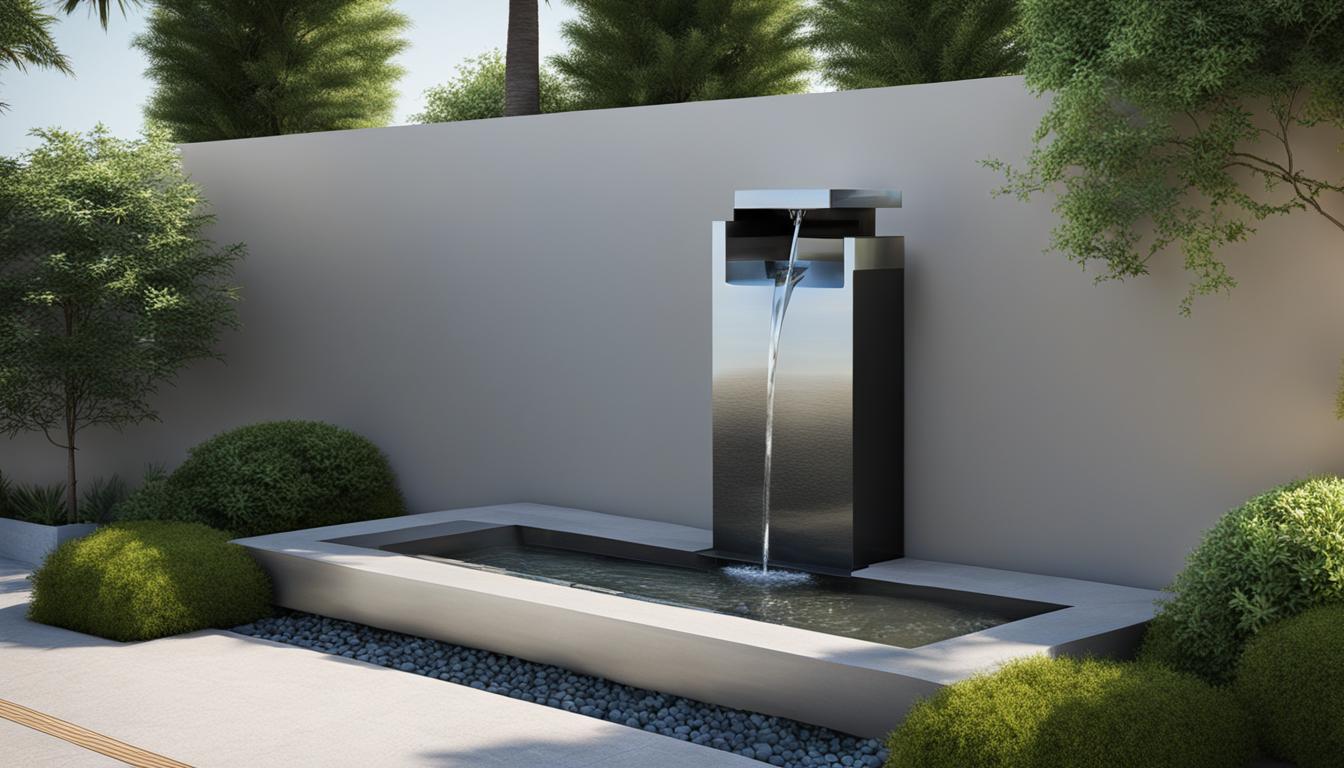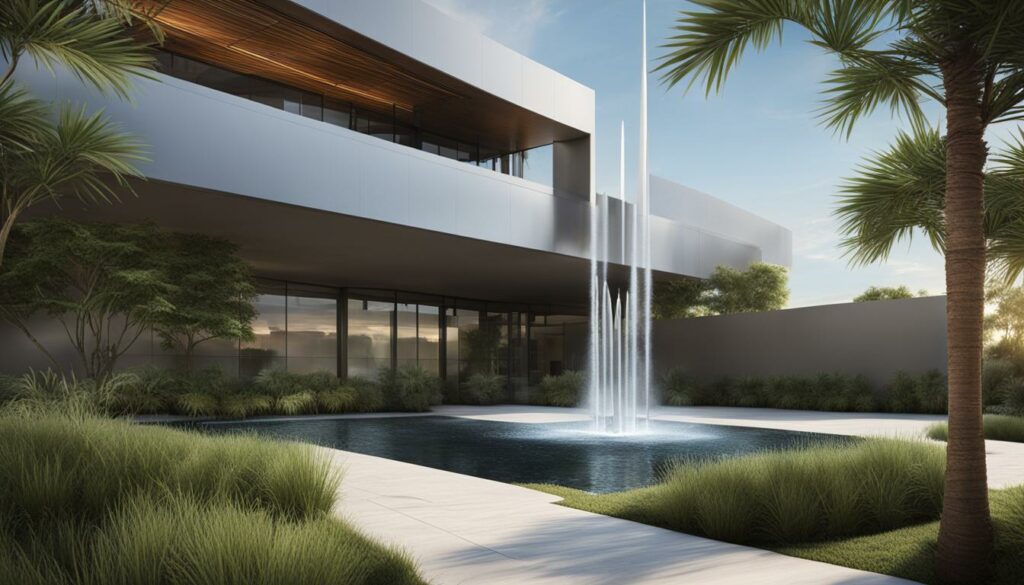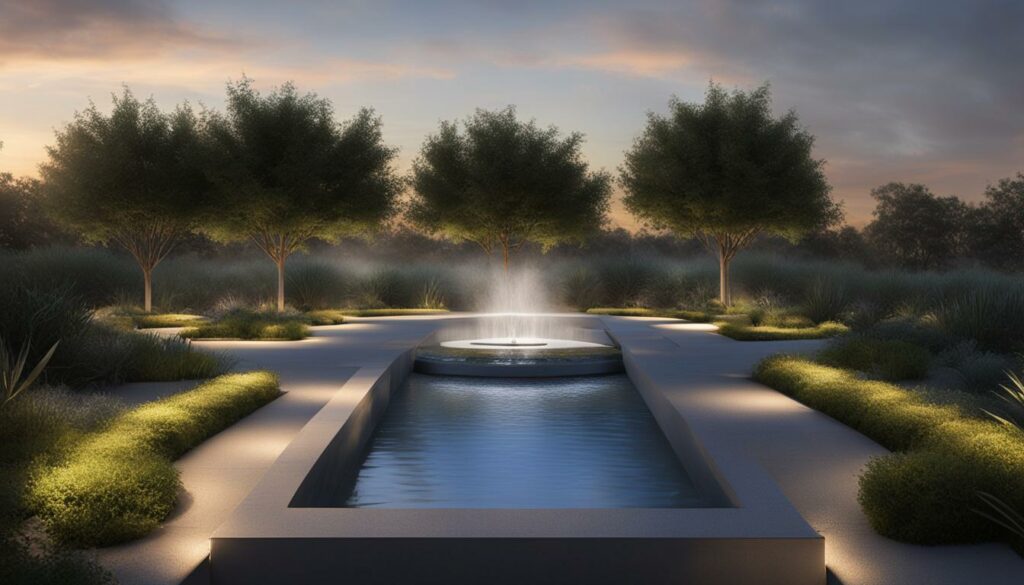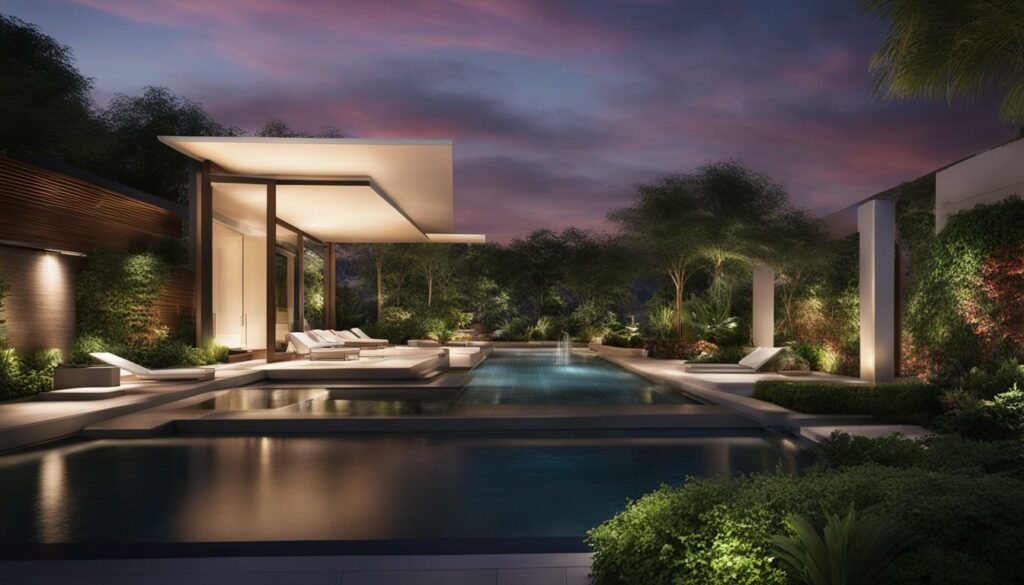
The essence of modern landscapes is increasingly defined by the integration of captivating water features that transcend mere aesthetics. In contemporary urban and residential settings, bespoke outdoor fountains have become an integral component of landscape design, offering a harmonious blend between form and function. As the world tilts towards redefining open spaces, innovative fountain design stands at the forefront, transforming areas into serene, visually stunning environments. These water structures, designed with custom elements, reflect the personal or communal identities within various settings, epitomizing the new age of environmental art.
Key Takeaways
- The integration of water features in modern landscapes brings a serene and aesthetic quality to urban and residential spaces.
- Bespoke outdoor fountains have evolved from simple decorations to being pivotal in landscape planning.
- Innovative fountain design can reflect unique personal or communal identities, making each installation special.
- Contemporary landscapes are becoming increasingly interactive and engaging through creative water feature integrations.
- The planning and creation of modern fountains consider both visual artistry and functional sustainability.
Exploring the Rise of Modern Fountains in Landscape Architecture
The integration of modern fountains into landscape design is a reflection of broader architectural trends that prioritize dynamic, interactive elements in both urban spaces and private retreats. Cutting-edge design technology and innovative materials have allowed landscape architects to push the boundaries of traditional water features, cementing outdoor fountains as central to the modern aesthetic and ecological dialogue.
As urban planners and designers seek to revitalize public areas and enhance private landscapes, modern fountains have emerged as sculptural and functional landmarks. These contemporary structures often serve as interactive pieces, encouraging engagement and rekindling the public’s connection with natural elements. The burgeoning trend emphasizes the fountain’s role not merely as decorative items but as vital components fostering social interaction and relaxation.
Modern fountains represent a nexus between artistic expression, environmental stewardship, and communal well-being, redefining our engagement with outdoor spaces.
The shift towards sustainability has also been a significant factor in the evolution of outdoor fountains. These water installations now often incorporate eco-friendly technologies, such as recirculating water systems and solar-powered pumps, underlining a commitment to conservation while retaining their aesthetic appeal. The result is a harmonious blend of form and function, where fountains enhance the visual landscape and serve the greater good by promoting water conservation.
- Interactivity and engagement with water features
- Usage of eco-friendly materials and sustainable practices
- Contribution to the aesthetic and social value of the surrounding environment
Notable projects within this burgeoning field of landscape design include interactive fountains that invite playful interaction and cultural landmarks that resonate with local heritage. These projects showcase the role of modern fountains as pivotal elements in landscape architecture, embodying the collective imagination and ingenuity of contemporary society.

In conclusion, the rise of modern fountains within landscape architecture underscores a profound shift in design philosophy. This approach integrates beauty and utility, creating spaces that are not only visually compelling but also socially vibrant and environmentally considerate. As this trend continues, we can expect to see even more innovative applications of water features in landscapes around the world.
Elements of Modern Fountain Design
The essence of modern fountain design has shifted markedly in recent years, with an emphasis on simplicity, user interaction, and ecological responsibility. These water features are not just aesthetic additions but serve a multipurpose role in today’s landscapes. Observing the current trends, it becomes evident that minimalism, interactivity, and sustainability are not just buzzwords but fundamental concepts that shape the modern approach to fountain design.

Minimalist Aesthetic and Clean Lines
Minimalism in fountain design is a response to the clutter and complexity of urban landscapes. Designers are opting for clean lines and uncomplicated forms, creating serene and contemplative spaces. This approach allows the natural beauty and the soothing sounds of water to take center stage, offering an oasis of calm in a busy world. Garden fountains that exemplify this minimalist approach become timeless pieces, harmonizing with the surrounding environment rather than competing with it.
Interactive Water Features
The modern era has witnessed a surge in interactive water features that invite engagement and play. These dynamic installations often respond to the presence of visitors or change with environmental conditions, making each encounter unique. The interactive aspect transforms traditional notions of fountains, turning them into lively and responsive elements that encourage social interaction and communal experiences.
Integration with Sustainable Systems
As sustainability takes a front seat in design considerations, modern fountains are being integrated with sustainable water systems. These systems are designed to consume less water and energy, employing recycling methods and eco-friendly materials. Such sustainable practices not only reduce the environmental footprint but also promote a message of conservation and responsibility. Modern garden fountains are often seen as showcases for how water usage can be both beautiful and conscientious.
Fountain Design as a Focal Point in Outdoor Spaces
In the lexicon of outdoor design, a well-crafted fountain is often heralded as the focal point of the surrounding area, drawing the eye and commanding attention. The infusion of innovative fountain lighting and the melodious sound in water features combine to elevate the outdoor aesthetic, transforming a simple garden or plaza into an immersive sensory experience.
Captivating Visual Appeal
Fountains, with their intricate designs and cascading water patterns, provide a dynamic visual anchor that enhances the beauty of their environment. Contemporary designers meticulously blend form with function, ensuring that each fountain integrates seamlessly with the landscape to signify elegance and luxury.

Incorporating Lighting and Sound for Ambience
As the sun sets, fountain lighting takes center stage, creating a mesmerizing interplay of light and water. Strategically placed LED lights not only underscore the water’s graceful movements but can also be tailored to evoke particular moods or to celebrate special events through varying colors and intensities. Complementing this visual spectacle is the sound design, which ranges from the natural tranquility of running water to orchestrated acoustics that fill the air with melodic tunes or nature-inspired sounds, heightening the immersive atmosphere.
Exquisite fountain design goes beyond the visual; it must engage all the senses, orchestrating a harmony between sight, sound, and the space in which it resides.
The result is a multifaceted fountain that stands as a testament to human creativity and engineering—a statement piece that resonates with visitors and becomes a cherished landmark within its community, celebrating the confluence of artistry and nature.
Innovative Materials and Technology in Fountain Construction
The landscape of fountain construction is undergoing a renaissance, spearheaded by innovative materials and breakthroughs in fountain construction technology. These advancements are not only enhancing the durability and longevity of fountains but are also opening new avenues for designers to express creativity. Durable composites, resilient stones, and corrosion-resistant metals are being sourced to withstand the rigors of both climate and time, while preserving the intricate beauty essential to these water features.
Modern water sculptures and custom fountains are transcending traditional boundaries with the aid of technology. Programmable water jets enable precise control over water patterns, creating mesmerizing displays that were once deemed unattainable. LED lighting systems imbue fountains with vibrant colors and the capacity to adapt to different themes or occasions. These technologies not only accentuate the fountain’s aesthetics but also its interactive aspect, engaging onlookers in a sensory dance of light and water.
Moreover, the conscientious shift towards sustainability is evident in the use of environmentally friendly pumps and water management systems that conserve water and energy. These eco-innovations underscore a commitment to preserving natural resources while delivering artistic and immersive experiences. Fountain construction is indeed at the threshold of a new era, where the confluence of innovative materials, fountain construction technology, and ecological awareness is reshaping the identity of urban and private landscapes alike.








